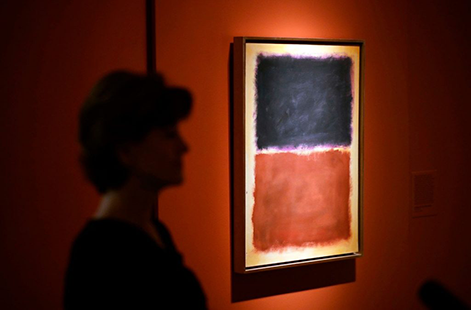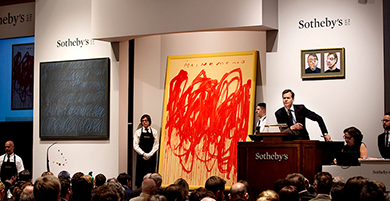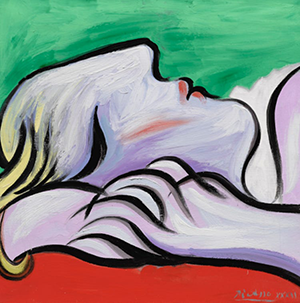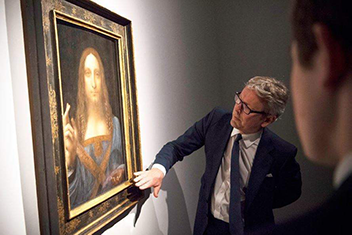There’s a huge misconception about the art market. The way we think art establishments are the ultimate form of art authentication, certification and verification, is an absolute illusion. Most of the times, not even top experts can identify fakes, and this is something to have in mind: If people weren’t around to witness artists creating every artwork, study or a simple sketch, how can anyone be sure if this artist was the real author behind said masterpiece?
The opaque and rather unregulated art market is actually, pretty vulnerable to forgeries, tax fraud, and money laundering – just to name a few. Therefore, when a new suspicious and polemic art fraud case comes up, everybody acts surprised.
Thanks to Netflix, everybody is talking about the documentary “Made You Look – A Real Story About Fake Art”. Cases like this are a bit more common than one might think. In the end, the art market is an unregulated market for some reason, right?
In this article, I will tell you about 5 of the biggest art market scandals that made a historic mark in the art world.
The Biggest Art fraud in the United States
For almost 20 years, 60 fake artworks from Blue-Chip artists were sold for 80 million Us dollars in the high-end market. Paintings supposedly from Mark Rothko, Willem de Kooning, Jackson Pollock, Robert Motherwell among others, were actually, original creations from the Chinese artist Pei-Shen Qian. But, due to this big scheme, the artworks were sold as originals from other artists by Knoedler gallery. At the time, Knoedler was one of the most reputable art galleries in New York, so, as one might expect, no one could ever suspect that such an established institution would be selling fakes.
It all started with a supposedly new and never seen Rothko in the market. Wannabe art dealer Glafira Rosales appeared at Knoedler Gallery – this major fine art dedicated art gallery at the time, under the direction of Ann Freedman, – to show a newly discovered artwork of Mark Rothko. Apparently, this unseen artwork was owned by a secret individual who went by “Mr.x” on official and reviewed documents that, very conveniently testified that this Mr X was inherited a bunch of famous artworks and wanted to sell it all at “cheap” prices. Glafira Rosales wasn’t an agent in the art market by any means, and, from the beginning, all works showed a big lack of proof, evidence and provenance on the history behind where the artwork came from.
From the start, any professional gallerist could see this as a massive red flag. However, not for Ann Freedman, who actively and (probably) knowingly sold 60 fake artworks, summing a total of 80M US Dollars, for 15 years to the biggest art collections and most famous museums. She even sold a fake Rothko to Domenico de Sole chairman of Sotheby’s. Either Freedman was really naïve and – I’m sorry dumb, or she had a big stomach in order to handle such fraud.
Up until today, Rosales is the only person convicted in the case and sentenced to three months in jail… She argued that she was coerced into the scam by an abusive boyfriend, Jose Carlos Bergantinos Diaz, who very conveniently after the scam came public ran away to Spain and God only knows how he managed to avoid extradition to the U.S. on a 12-count federal indictment alleging fraud, money laundering, conspiracy and false statements.
The Knoedler Gallery and its former director, Ann Freedman said they were duped along with everyone else – and have not been charged with any wrongdoings. But because of facing multiple customer lawsuits, the gallery closed in 2011 after 165 years in business.
Well, I guess that if we believe something to be true, no matter how much of a lie it’s proven to be, anything can eventually become true, at least for some time.
I fully suggest to everybody who wants to know a bit more about the art market to watch the documentary on Netflix “ Made you Look – A True Story About Fake Art”.
Mary Boone and Tax Fraud
Mary Boone is, without a doubt, one of the most important names of the Contemporary Art Market. Not only was she responsible for launching names as Basquiat and Julian Schnabel in the ’80s. If Vene Vini Vinci could have a physical representation, Mary Boone embodied it. Who would have guessed that a woman born and raised in a poor Egyptian household would make it to the big man’s game in the high-end art market in New York? Even if arrested a few times, Boone deserves at least, a ton of respect.
On September 5, 2018, the U.S. Attorney’s Office of the Southern District of New York filed a suit against Boone for multiple false statements on her Income Tax Return for 2011. The extent of Boone’s false tax statements spanned both her gallery’s forms as well as her personal forms.
Boone, who was 66 at the time, admitted to filing income tax returns falsely, claiming approximately $1.6 million in personal expenses as tax-deductible business expenses in 2011, holding a 90 per cent partnership interest in the gallery she owned. According to the prosecutors, she directed her accountant to file fraudulent 2011 federal income tax returns for her gallery and her, individually. In 2011, the gallery reported a false business loss of approximately $52,521, even though the gallery actually made a profit of approximately $3.7 million in 2011.
Mary Boone was sentenced to two-and-a-half years in prison for two counts of tax fraud. Currently, she is back home and we never know if she will be back in the game again. But if Ann Freedman has made it back into business, there is certainly enough room for Mary Boone to continue her business, too.
Sotheby’s and Christie’s Price-Fixing Scheme
Prior to 1995, Sotheby’s and Christie’s, the world’s largest auction houses, were in fierce competition for consignments from sellers. At times, they would drastically cut commission rates paid by sellers, make donations to sellers’ favourite charities, and even extend financial guarantees to sellers. In March of 1995, this competition abruptly ended. Christie’s announced that it would charge sellers a fixed, non-negotiable commission on the sales price, and, a month later Sotheby’s followed the same steps and announced the same policies. Detailed documents kept by Christopher Davidge, Christie’s former chief executive, show that the abrupt change was due to a price-fixing conspiracy. Christie’s cooperated with the US Department of Justice in their investigation, and Sotheby’s ultimately pleaded guilty to fixing sellers’ commissions.
Both auction houses Sotheby’s and Christie’s accepted each to pay $20 million to settle antitrust litigation related to a costly price-fixing scheme. After the scandal, the two houses agreed to jointly pay clients $512 million. Sotheby’s also paid $45 million in criminal fines in the United States and $70 million to shareholders.
European Union authorities fined Sotheby’s $20.1 million in October 2002 for operating a price-fixing cartel. However, London-based Christie’s managed to escape fines for being the first auction house to provide verified and regulated evidence to the government.
The auction process appears to have resulted in a resounding success for the class action participants as a group. The damages were estimated to total between $50 and $75 million for each plaintiff over the 5 years of the conspiracy. Even after tripling these damages, as the US statute requires, the plaintiffs were very well rewarded given that they did not even have to risk a trial.
Fake Picasso Sold at Sotheby’s
Divorces among billionaires are usually messy, but there was absolutely no need to be this messy if you ask the Wall Street Investor Bill Gross, who discovered that the Picasso he was selling at Sotheby’s was in fact, a fake. His ex-wife got the original painting and replaced it with a fake that she painted herself…
The painting in question, which Picasso created in 1932, features Marie-Thérèse Walter, a 17-year-old French model whom Picasso began a relationship with when he was 45 and still living with his first wife, Olga Khokhlova, and their five-year-old son.
But the story behind how the painting made its way to Sotheby’s is just as juicy and interesting, as usual. Sue Gross was awarded the painting in August 2017, after she and Bill agreed to divvy up some of the marital assets by making alternate picks between each asset. In a coin toss, Sue got to pick first — and selected the Picasso. Bill Gross is a great investor, but I guess his memory isn’t functioning in full capacity… How can one miss that?
Yves Bouvier and His Billion Dollar Commissions
Yves Bouvier is probably one of the shadiest names in the art market. A man who made a billion out of one and only piece. That already sounds shady and unbelievable in itself.
Yves Bouvier has always been a businessman until the day he had the luck of being introduced to Dmitry Rybolovlev and becoming his private art advisor. For small art advisors like me, having a client like Dmitry is a dream that not many advisors will ever get. Seeing how much Dimitry was ripped off is an ethical and moral burial to everything I’ve ever learned about the art world…!
In court documents, the Russian collector said that Bouvier presented himself as an advisor and was paid a commensurate fee, but dramatically marked up the price of artworks before selling them.
Rybolovlev first brought an action against Bouvier in 2015, accusing him of fraudulently marking up the price of a slew of artworks (which notably included Leonardo da Vinci’s now-infamous Salvator Mundi) that Bouvier was to broker for him for $1 billion over 12 years. Bouvier has always maintained his innocence, arguing that he was operating as a dealer, not a broker, and therefore, was within his rights to take this massive commission.
A court in Monaco dismissed a similar criminal case Rybolovlev filed against. Meanwhile, Rybolovlev himself has been charged in connection with a corruption probe in the city-state.
Conclusion
- If an almost impossible art piece ever comes your way, just be cautious. Don’t be dumb and don’t get fooled: if the evidence is unclear of where this masterpiece comes from, be hesitant. Most likely this million-dollar money maker is probably fake and it will cost you a couple of years of your life if you get caught in a foolish mistake.
- If you’re ever considering doing tax fraud with the artworks that you’re selling and buying – just don’t. Yes, well planned, you might get away with it for a few years but being caught is inevitable.
- Always verify an exceptional artwork with more than a couple of experts. If you’re unsure of where it comes from, always get a third or fourth opinion about its provenance.
- And yes, although auction houses are probably the safest way to purchase valuable artworks, always try and double-check with experts, historians and art forensics. Always demand the right paperwork and documentation about the piece’s whereabouts and history. It’s easy to be fooled, so make the right and correct steps when purchasing something that can be valued at millions or just even thousands.





